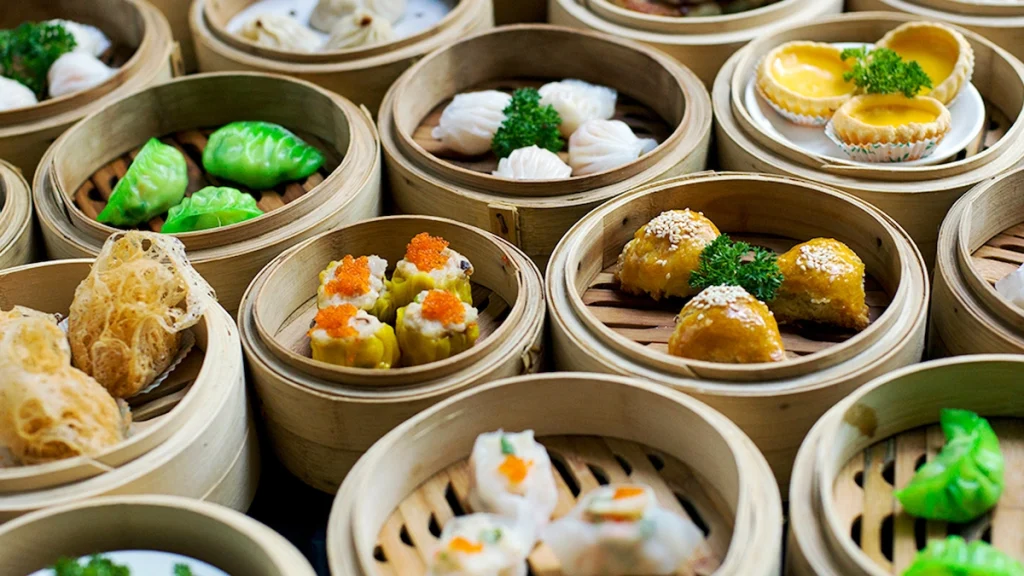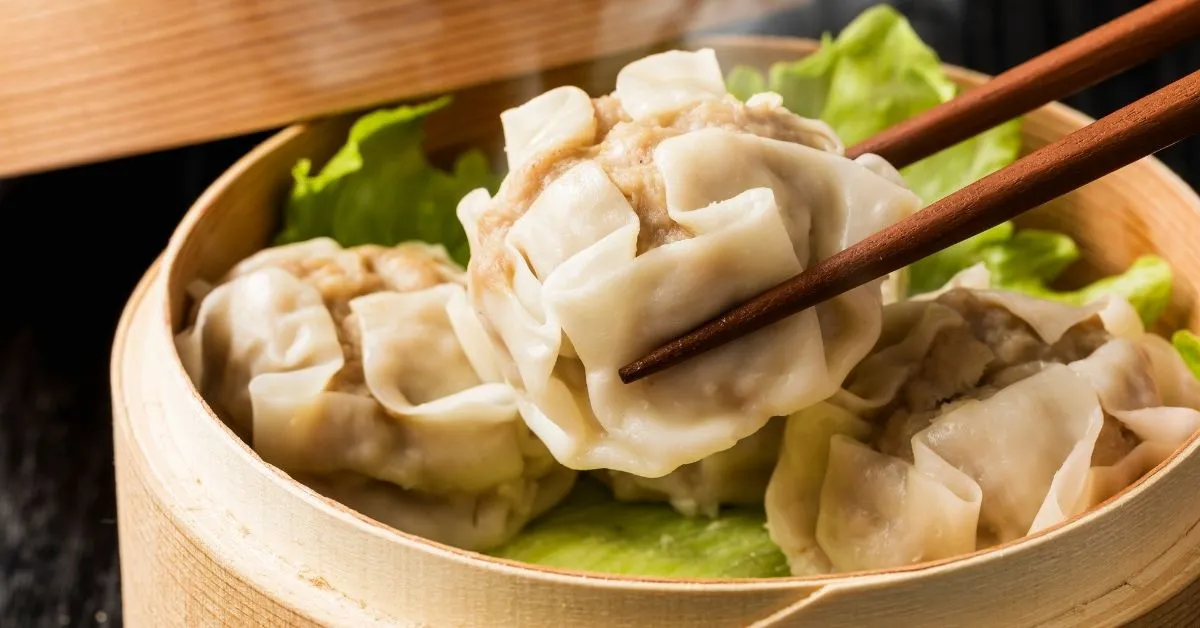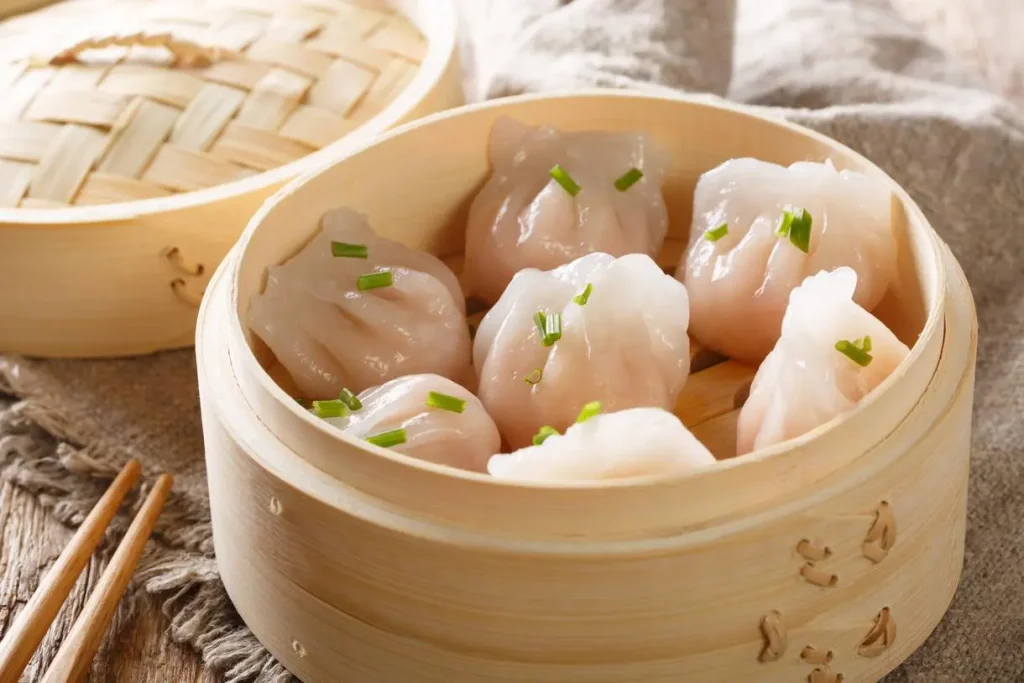Dim sum is a unique Chinese dish that is not only famous for its great taste but also for an unforgettable eating process. This traditional meal, first served in the teahouses of Cantonese China, has over time been transformed into a full-scale dining event available worldwide. It consists of various small dishes: steamed buns, dumplings, and more snacks during brunch. This paper looks inside the remarkable universe of dim sum, from its cultural roots to its mainstream modern phenomenon.
The Cultural Heritage of Dim Sum
Contents
- 1 The Cultural Heritage of Dim Sum
- 2 Exploring the Variety of Dim Sum
- 3 The Art of Eating Dim Sum
- 4 Dim Sum Beyond China
- 5 Making Dim Sum at Home
- 6 Celebrating Dim Sum Through Festivals and Events
- 7 Nutritional and Dietary Considerations of Dim Sum
- 8 The Role of Dim Sum in Modern Gastronomy
- 9 Technological Innovations in Dim Sum Preparation
- 10 Preserving Tradition While Embracing Change
- 11 A Dish for All Seasons
Historical Origins
Dim sum originated from the meal moments of travelers, laborers in the rural areas, and those plying the ancient Silk Road in the Canton region of China. It was initially served as a snack in the morning or early afternoon, taking tea with it. “Yum cha”, which came to identify the meal, means ‘drinking tea’ in Cantonese. It evolved with time and acquired communal undertones, where people share different small portions of many dishes in one sitting.
The Evolution of Dim Sum
Originally, dim sum was served primarily in teahouses in southern China. However, it eventually gained popularity in various parts of Asia and later, across the world. Each region added its own local flavors and ingredients to the traditional dishes, thus expanding the variety and appeal of dim sum menus globally.

Exploring the Variety of Dim Sum
Classic Dim Sum Dishes
Dim sum includes a diverse range of flavors and textures, making it a feast for the senses. Some of the most beloved dim sum dishes include:
- Har Gow (Shrimp Dumplings): Delicate wheat starch skins filled with juicy shrimp.
- Siu Mai (Pork Dumplings): Open-topped dumplings filled with pork and shrimp, often topped with crab roe or a green pea.
- Char Siu Bao (Barbecue Pork Buns): Fluffy buns filled with sweet and savory barbecue pork.
- Cheung Fun (Rice Noodle Rolls): Steamed rice noodles rolled around fillings like shrimp, beef, or vegetables, served with a sweet soy sauce.
Vegetarian and Innovative Variants
As dim sum has evolved, so have the offerings. Many restaurants now provide vegetarian options like mushroom dumplings, tofu skin rolls, and vegetable buns. Chefs around the world are also getting creative with ingredients and techniques, crafting dishes that blend traditional Cantonese flavors with local tastes.
The Art of Eating Dim Sum
Traditional Serving and Eating Methods
Dim sum is also often presented in bamboo steamers or on small plates, which are wheeled through the establishment for guests to select from. This is referred to as ‘cart style,’ and it is intended to be a surprise and provide variety. They can choose whatever seems best to them and create an exclusive meal for them. It is customary to eat dim sum with family, friends, or business associates. Many of the dishes are designed to be shared. Hand the plate to someone else before serving yourself and use their chopsticks to serve from the plate in front of you.
Dim Sum Beyond China
Global Popularity
Dim sum has become an intrinsic part of the culinary scene in global cities, from San Francisco to London. This burgeoning globalization is born out of the fact that dim sum was forged by the appetites and foodways of different regions. Dim sum restaurants around the world often incorporate local ingredients and might serve fusion dishes, incorporating adapted twists with the traditional Cantonese methods.
Cultural Adaptations
As dim sum has traveled, it has been adapted to meet local culinary preferences and dietary restrictions. For instance, some restaurants might offer gluten-free dim sum options or use halal meats to cater to Muslim customers. This adaptability has been key to its global success.
Making Dim Sum at Home
Tips and Techniques
Therefore, those culinary fans who want to try themselves in the process of preparing dim sum at home should pay close attention to the quality of the ingredients used and the recommended preparation methods. In particular, many components such as dough for dumplings or buns should have a certain texture. For such manipulations, a variety of online tutorials, cookbooks, and cooking courses can be suitable.
Essential Tools
Some essential tools for making dim sum include bamboo steamers, rolling pins for dough, and pastry brushes for applying glazes. Having the right tools can make the process of cooking dim sum more authentic and enjoyable.






